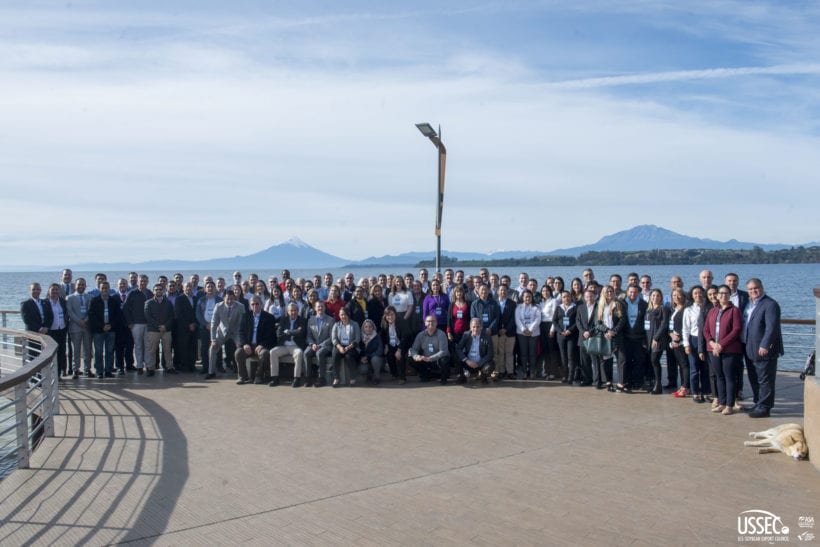Americas Buyers’ Conference Highlights U.S. Soy Advantages
- Category:
- General News

By Kevin Roepke, USSEC Regional Director - Americas
USSEC, along with the U.S. Grains Council (USGC) recently organized a buyers’ conference in Puerto Varas, Chile with the region’s largest buyers and some of the world’s leading authorities in agricultural marketing. The conference was located in Chile to attract buyers from South America, specifically from the West Andean regions of Chile, Ecuador, and Peru—some of the most challenging markets in the Americas for the United States to penetrate.
The joint conference, held in conjunction with our friends at USGC, was a symbol of the symbiotic relationship that Latin American buyers can capitalize on by using combination cargos of multiple products—a feature that the United States dominates the world over. In today’s hyper-competitive commodity markets, every advantage helps and USSEC is aggressively promoting every possible advantage throughout the region. The current trade disruptions have created paradigm shifts in the way products flow, and USSEC is on the bleeding edge of highlighting the importance of seizing opportunities that may not have been there yesterday.
A recurring theme of the conference was to challenge one’s traditional mental models to maximize utility. For example, Chile is often seen as a regional exporter of pork and poultry; however, in reality, their trade books on these two products are quite balanced, with respect to imports and exports. Moreover, the U.S., one of the world’s largest beef exporters, is also the world’s largest beef importer. These paradoxes enable the countries to capitalize on arbitrage opportunities and optimize value for the primal cuts. As a result, growing markets should not be afraid to embrace trade to increase food security. That same narrative was applied to soy products as well. Collectively, Chile, Peru and Ecuador import about 3.6 million metric tons (MMT) of soybean meal, slightly more than the Philippines. Yet in the last five years, the U.S. has struggled to achieve much over 25 percent market share, largely because of prescribed trade patterns with Argentina. This conference was developed to change this routine and establish the U.S. as a viable supplier going forward.
On a value basis, soy products (soybeans, soybean meal, and soybean oil) sales to Latin America are up 37 percent from September to March. Creating and unlocking value through forums like this is a key catalyst for capturing growth like that. Speakers ranged from Market-to-Market host Delaney Howell to food trend guru Dave Donnan. Everybody on the agenda provided some value addition that buyers were able to immediately implement back in their operations. By creating a platform for the world’s preeminent thought leaders, USSEC is investing in the region’s food security and economic prosperity, while positioning the U.S. soy industry to capitalize on any available opportunity. Through Agricultural Trade Promotion (ATP) funding, this conference will be followed up with exploratory missions to the Pacific Northwest (PNW) and further trade and market promotions with Chilean buyers.
The conference concluded with a series of roundtable business-to-business meetings, with professional translation, that enabled U.S. suppliers to engage in business meetings and ink direct sales of U.S. feed grains and soy products.
American Soybean Association (ASA) director Willard Jack participated in this conference and gave a U.S. soy grower perspective.


